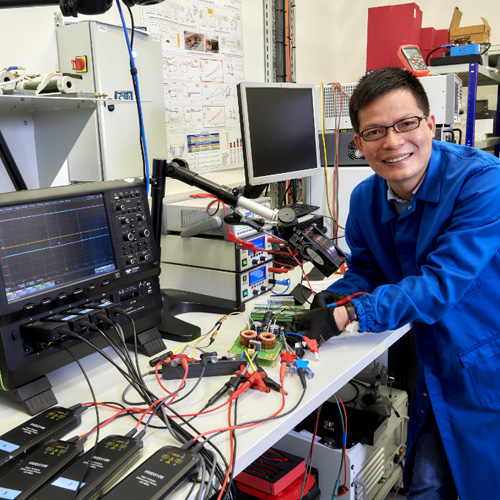
| Power converters are crucial to the interconnectedness of energy systems. Tomorrow’s energy systems will have to be equipped for an energy mix that includes new sources of energy, for decentralized production and consumption, and for increased demand for electricity. They will also have to support the smart, efficient use of energy. To respond to these challenges, future generations of power converters will have to meet new efficiency, power density, reliability, and eco-design requirements. Wide bandgap materials like gallium nitride (GaN) and silicon carbide (SiC), which can support switching frequencies and voltages unattainable on silicon, are providing a path toward this new era. Beyond the walls of CEA-Liten, the broader CEA organization addresses the entire power electronics value chain, from materials to implementation in specific use cases. CEA-Liten can draw on the CEA’s most advanced innovations to reinvent power converter designs and topologies. This changing power-component landscape also raises questions about the role of direct current (DC) in medium-voltage applications. MV transformers often have DC stages and could be connected directly to each other to form networks. As there are currently no standards for DC in this area, we are investigating the issues around these types of architectures to assess their potential. - The purpose of the three-year TIGON project, which kicked off in 2021, is to prototype a medium-voltage (3,000 V DC and 1,500 V DC) dual microgrid with SiC power converters.
- Another project, DC Power, is focusing on two medium-voltage (3,000 V DC) pilot demonstrators with isolated converters to supply high-power hydrogen electrolyzers and datacenters.
And, as electric mobility gains traction, power electronics will become even more important. Tomorrow, electric vehicles—and more specifically, their batteries—will be considered components of the grid. With this scenario in mind, we are developing high-voltage (800 V) batteries and bi-directional chargers (either on-board or on charging stations). And, with exceptional efficiencies (up to 97%), these innovations can deliver high power density, reliability, and performance.
|